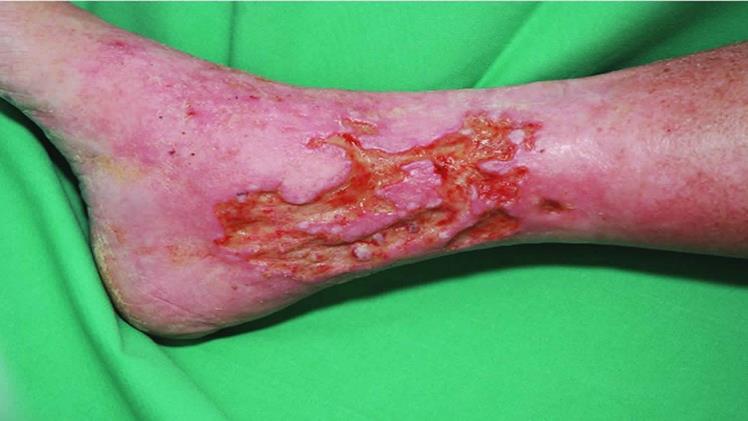Varicose veins are the most recognizable physical manifestations of venous insufficiency, a disorder characterized by inadequate flow in the feet and legs. However, venous stasis dermatitis, which is not as common, is a typical consequence of chronic venous insufficiency. A venous stasis dermatitis Somerville occurs once compromised vein valves stop returning blood to the heart. As the blood continues to pool inside the vein, pressure builds. Extra fluid leaks into the neighboring tissue, causing several skin alterations. Understanding the risk factors and symptoms of venous stasis dermatitis will help you seek treatment as soon as feasible. Continue reading to learn more.
What Exactly Is Stasis Dermatitis?
Stasis dermatitis is a disorder characterized by inflamed or irritated skin, typically on the lower legs. This sort of leg inflammation is commonly associated with aging but can also result from the malfunctioning of your veins. This malfunction causes blood accumulation in your lower legs causing edema, and skin issues.
What Are The Warning Signs Of Stasis Dermatitis?
This condition dramatically alters the skin’s look on the legs. The most typical warning sign is the reddish or brownish discoloration of one’s skin all around the lower legs and ankles. This coloration, made of hemosiderin deposits, arises as the hemoglobin in the blood disintegrates. Other common signs to watch out for include:
- Shiny skin
- Skin scarring
- Scaly skin
- Thickened skin
What Are The Risk Factors?
Stasis dermatitis commonly affects persons above 50 years with impaired circulation. This condition is especially prevalent among women. Typical risk factors include:
- Kidney failure
- Hypertension
- Obesity or excessive weight
- Congestive heart failure
- Sedentary lifestyle
- Kidney failure
- Varicose veins
How To Diagnose?
Your doctor will first determine the root cause of blood pooling in the legs. Your doctor might suggest an ultrasound to ensure you have no blood clotting. This test also detects blood vessel damage in the legs.
Occasionally, your physician might recommend allergy testing. These tests are performed to ensure that your skin complaints are not due to an allergy.
What Are The Available Treatment Options?
The most effective solution is dealing with the underlying cause, which is vein disease. Often, your physician might suggest conservative care solutions to enhance blood flow. These solutions include compression stockings, elevating your legs, reducing salt consumption, and taking Vitamin C supplements.
Some common vein treatment options doctors use to eradicate your unhealthy veins include:
- ClosureFast
The ClosureFast™ procedure is a form of Endovenous radiofrequency ablation. This treatment transmits radiofrequency radiation into the vein to induce venous wall collapse. As such, your blood is redirected to healthy veins.
2. VenaSeal
VenaSeal is an adhesive vein seal that shuts damaged veins, redirecting blood flow to surrounding healthy veins.
3. Microphlebectomy
Microphlebectomy is frequently paired with VenaSeal or ClosureFast to address varicose veins. This procedure involves microscopic cuts to extract, cut, and eliminate unhealthy varicose veins.
4. Ultrasound-Guided Sclerotherapy
With ultrasound-guided sclerotherapy, an irritant is injected into the damaged veins. This procedure causes vein atrophy and the destruction of diseased veins.
Do not overlook any risk factors or warning signs of stasis dermatitis. Otherwise, you risk complications such as permanent scarring, bacterial skin, and bone infection, or even skin cancer. Talk to your doctor about your care options.

